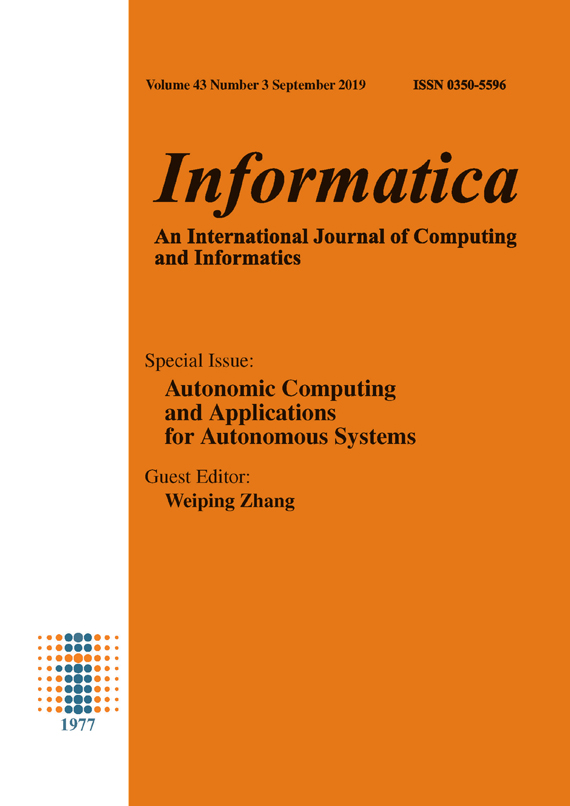Mining Multi-Dimensional Intra and Inter-Association Patterns of Call Records for Targeted Advertising using Multi-Granulation Rough Sets
DOI:
https://doi.org/10.31449/inf.v43i3.2161Abstract
Customer contacts to various businesses identified in telecom call records convey their interest in availing those services. Multi-dimensional attribute dependence with day and time of such communications generate useful insights for targeted advertising. Also, frequent and significant inter patterns of service associations give the probability that takers of one service may also be the prospects of the other. This work presents a multi granulation rough sets model to address the issue of prospect discovery from interest traits depicted in call records. The proposed method solves problems like higher computational complexity and large statistically insignificant patterns space inherent in traditional intra and inter-pattern mining methods. The algorithm is tested to generate target audience for food and restaurant business using one-month data of anonymous call records of a Thailand based telecom service provider. Some interesting mathematical properties of underlying knowledge structures are also validated.References
S. Sumathi and S. N. Sivanandam, Introduction to data mining and its applications. Berlin ; [London] : Springer, 2006.
J. Han, J. Pei, and Y. Yin, “Mining frequent patterns without candidate generation,” ACM SIGMOD Rec., vol. 29, no. 2, pp. 1–12, 2000.
J. Pei, J. Han, M. B. Asl, H. Pinto, Q. Chen, U. Dayal, and M. C. Hsu, “PrefixSpan Mining Sequential Patterns Efficiently by Prefix Projected Pattern Growth,” in Proc.17th Int’l Conf. on Data Eng., 2001, pp. 215–226.
H. Pinto, J. Han, J. Pei, K. Wang, Q. Chen, and U. Dayal, “Multi-dimensional sequential pattern mining,” Conf. Inf. Knowl. Manag., p. 81, 2001.
J. Pei, J. Han, M. B. Asl, H. Pinto, Q. Chen, U. Dayal, and M. C. Hsu, “PrefixSpan Mining Sequential Patterns Efficiently by Prefix Projected Pattern Growth,” in Proc.17th Int’l Conf. on Data Eng., 2001, pp. 215–226.
M. Gupta and J. Han, “Approaches for Pattern Discovery Using Sequential Data Mining,” Pattern Discov. Using Seq. Data …, no. c, pp. 1–20, 2012.
V. Boonjing and P. Songram, “Efficient algorithms for mining closed multidimensional sequential patterns,” Proc. - Fourth Int. Conf. Fuzzy Syst. Knowl. Discov. FSKD 2007, vol. 2, no. Fskd, pp. 749–753, 2007.
S. Systems and C. Science, “Closed multidimensional sequential pattern mining Panida Songram * and Veera Boonjing,” vol. 2, no. 4, pp. 460–479, 2008.
L. Feng, T. Dillon, and J. Liu, “Inter-transactional association rules for multi-dimensional contexts for prediction and their application to studying meteorological data,” Data Knowl. Eng., vol. 37, no. 1, pp. 85–115, 2001.
Q. Li, L. Feng, and A. Wong, “From intra-transaction to generalized inter-transaction: Landscaping multidimensional contexts in association rule mining,” Inf. Sci. (Ny)., vol. 172, no. 3, pp. 361–395, 2005.
W. Hämäläinen, “Assessing the statistical significance of association rules,” arXiv Prepr. arXiv1405.1360, 2014.
J. Yang, Xi-bei; Qian, Yu-hua; Yang, “Hierarchical Structures on Multigranulation Spaces,” J. Comput. Sci. Technol., vol. Vol. 27, no. 6, pp. 1169–1183, 2012.
Z. Pawlak, Rough Sets: Theoretical Aspects of Reasoning About Data. Norwell, MA, USA: Kluwer Academic Publishers, 1992.
Z. Pawlak, “Rough sets,” Int. J. Comput. Inf. Sci., vol. 11, no. 5, pp. 341–356, 1982.
Z. Pawlak, “Data Mining { a Rough Set Perspective,” pp. 3–12, 1999.
G. M. Weiss, “Data Mining in Telecommunications,” in Data Mining and Knowledge Discovery Handbook, O. Maimon and L. Rokach, Eds. Boston, MA: Springer US, 2005, pp. 1189–1201.
T.-R. Qiu, Q. Liu, and H.-K. Huang, “A Granular Computing Approach to Knowledge Discovery in Relational Databases,” Acta Autom. Sin., vol. 35, no. 8, pp. 1071–1079, 2009.
Y. Yao and Y. She, “Rough set models in multigranulation spaces,” Inf. Sci. (Ny)., vol. 327, pp. 40–56, 2016.
Y. Qian, J. Liang, Y. Yao, and C. Dang, “MGRS: A Multi-granulation Rough Set,” Inf. Sci., vol. 180, no. 6, pp. 949–970, Mar. 2010.
X. Wu, C. Zhang, and S. Zhang, “Efficient Mining of Both Positive and Negative Association Rules,” ACM Trans. Inf. Syst., vol. 22, no. 3, pp. 381–405, Jul. 2004.
P.-N. Tan, M. Steinbach, and V. Kumar, Introduction to Data Mining, (First Edition). Boston, MA, USA: Addison-Wesley Longman Publishing Co., Inc., 2005.
R. a Becker, R. Cáceres, K. Hanson, J. M. Loh, S. Urbanek, A. Varshavsky, and C. Volinsky, “Clustering Anonymized Mobile Call Detail Records to Find Usage Groups,” 1st Work. Pervasive Urban Appl., 2011.
A. Bascacov, C. Cernazanu, and M. Marcu, “Using data mining for mobile communication clustering and characterization,” in Applied Computational Intelligence and Informatics (SACI), 2013 IEEE 8th International Symposium on, 2013, pp. 41–46.
Downloads
Published
Issue
Section
License
I assign to Informatica, An International Journal of Computing and Informatics ("Journal") the copyright in the manuscript identified above and any additional material (figures, tables, illustrations, software or other information intended for publication) submitted as part of or as a supplement to the manuscript ("Paper") in all forms and media throughout the world, in all languages, for the full term of copyright, effective when and if the article is accepted for publication. This transfer includes the right to reproduce and/or to distribute the Paper to other journals or digital libraries in electronic and online forms and systems.
I understand that I retain the rights to use the pre-prints, off-prints, accepted manuscript and published journal Paper for personal use, scholarly purposes and internal institutional use.
In certain cases, I can ask for retaining the publishing rights of the Paper. The Journal can permit or deny the request for publishing rights, to which I fully agree.
I declare that the submitted Paper is original, has been written by the stated authors and has not been published elsewhere nor is currently being considered for publication by any other journal and will not be submitted for such review while under review by this Journal. The Paper contains no material that violates proprietary rights of any other person or entity. I have obtained written permission from copyright owners for any excerpts from copyrighted works that are included and have credited the sources in my article. I have informed the co-author(s) of the terms of this publishing agreement.
Copyright © Slovenian Society Informatika








